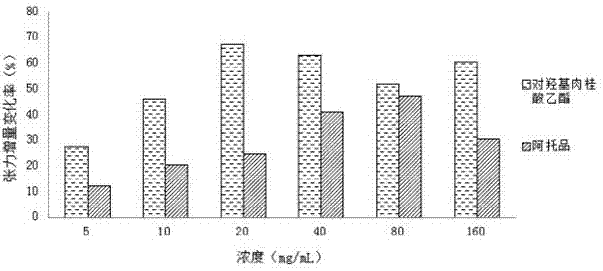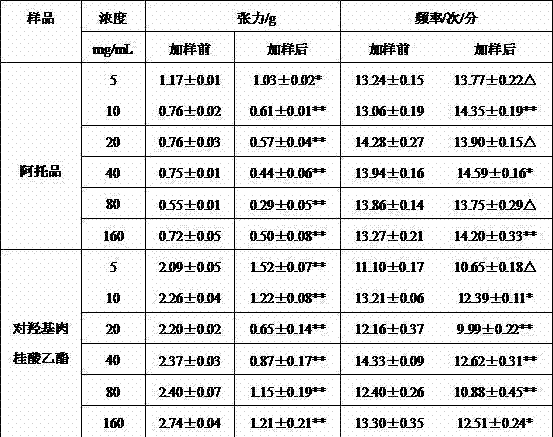Method for separating P-hydroxyl ethyl cinnamate from raspberry leaves and application of P-hydroxyl ethyl cinnamate
A technology of ethyl cinnamate and raspberry leaf, applied in the field of medicine, can solve problems such as unreported compounds
- Summary
- Abstract
- Description
- Claims
- Application Information
AI Technical Summary
Problems solved by technology
Method used
Image
Examples
Embodiment 1
[0018] Embodiment 1 prepares the obtained compound of the present invention and examines its activity
[0019] 1. Preparation of raspberry leaf extract
[0020] 5 Kg of raspberry leaves, a Chinese herbal medicine, were heated and rotated in a 60°C water bath with 85% ethanol for three times. After 2 hours, the extracts were combined, concentrated in vacuo to recover the solvent, and the extract extract was obtained;
[0021] 2. Screening of active sites that inhibit intestinal peristalsis
[0022] Dissolve the extract in water, extract with petroleum ether, chloroform, ethyl acetate and n-butanol in sequence, add 1 / 5 volume of extractant to the dissolved liquid each time, and extract about 15-20 times until the color of the extractant is close to zero. up to color. The extracts of petroleum ether, chloroform, ethyl acetate and n-butanol were respectively obtained, the solvents were recovered under reduced pressure, and the powders of each extraction part were ob...
PUM
 Login to View More
Login to View More Abstract
Description
Claims
Application Information
 Login to View More
Login to View More - R&D
- Intellectual Property
- Life Sciences
- Materials
- Tech Scout
- Unparalleled Data Quality
- Higher Quality Content
- 60% Fewer Hallucinations
Browse by: Latest US Patents, China's latest patents, Technical Efficacy Thesaurus, Application Domain, Technology Topic, Popular Technical Reports.
© 2025 PatSnap. All rights reserved.Legal|Privacy policy|Modern Slavery Act Transparency Statement|Sitemap|About US| Contact US: help@patsnap.com


